North American was a Great Lakes steamship built by the Great Lakes Engineering Works at Ecorse, Michigan, in 1913 for the Chicago, Duluth & Georgian Bay Transit Company. The vessel was launched on January 16, 1913, and was the older of two near-sister ships, the newer one being SS South American.
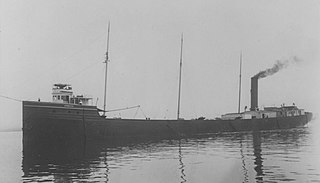
The SS Appomattox was a wooden-hulled, American Great Lakes freighter that ran aground on Lake Michigan, off Atwater Beach off the coast of Shorewood, Wisconsin in Milwaukee County, Wisconsin, United States in 1905. On January 20, 2005 the remnants of the Appomattox were listed on the National Register of Historic Places.

The SS Samuel Mather (1887) was the first of seven U.S. merchant ships to bear that name. The wooden Mather sank in 1891 after she was rammed by the steel freighter Brazil in heavy fog in Whitefish Bay 8 miles (13 km) from Point Iroquois, ending the Mather's 4-year career. Her intact wreck is a rare of example of wooden freighters that plied the Great Lakes and she is a popular scuba diving site. Although there was no loss of life when the Mather sank, her wreck claimed the lives of three scuba divers more than 100 years after she sank. Artifacts from her wreck were illegally removed in the 1980s by the Great Lakes Shipwreck Historical Society. The artifacts are now the property of the State of Michigan and are on display as a loan to the Great Lakes Shipwreck Museum. The wreck of the Mather is protected as part of an underwater museum in the Whitefish Point Underwater Preserve.

SS Chicora was a passenger-and-freight steamer built in 1892 for service on the Great Lakes. Considered to be one of Lake Michigan's finest steamers, she was lost with all hands in January 1895. She is now remembered chiefly for being mentioned by Chicago writer Nelson Algren, in Algren’s prose-poem, Chicago: City on the Make: “Who now knows the sorrowful long-ago name of the proud steamer Chicora, down with all hands in the ice off South Haven?” as well as “Sunk under the ice in the waves off South Haven, sunk with all hands for good and forever, for keeps and a single day.”
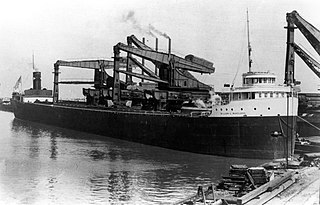
SS William C. Moreland was a 600-foot (180 m) long Great Lakes freighter that ran aground on Sawtooth Reef, Lake Superior on 18 October 1910, only a month after entering service. Visibility was poor due to the smoke from several forest fires, causing the William C. Moreland to ran full steam onto a reef. There were many attempts to salvage the ship, but eventually only the 278-foot (85 m) long stern was salvaged and was used to build the 580-foot (180 m) long Sir Trevor Dawson.

The J.H. Sheadle was an American Great Lakes freighter built in 1906. She was built in Ecorse, Michigan, by the Great Lakes Engineering Works. She was owned by the Grand Island Steamship Company of Cleveland, Ohio. She had the identification number #203826. She was used to transport coal, iron ore and grain across the Great Lakes of North America and Canada.

The J.H.G. Hagarty was a 550-foot (170 m) Canadian Great Lakes freighter that served from her launching in 1914 to her scrapping in 1968. The Hagarty was used to haul bulk cargoes such as iron ore, coal, grain and occasionally limestone. She had a length of 550-feet, a beam of 58-feet and a height of 31-feet. She was powered by a 2,400 horsepower triple expansion steam engine and fueled by two coal-fired Scotch marine boilers.

SS D.R. Hanna was a 552-foot (168 m) long American Great Lakes freighter that operated on the Great Lakes from November 12, 1906 to her sinking on May 16, 1919 after a collision with Quincy A. Shaw. D.R. Hanna was like many other freighters, and was used to haul bulk cargoes such as iron ore, coal and grain.

The Australasia was a wooden hulled American Great Lakes freighter that served on the Great Lakes of North America between her construction in 1884 to her burning and sinking in 1896. On October 18, 1896 while loaded with coal, the Australasia sank in Lake Michigan near the town of Sevastopol, Door County, Wisconsin, United States, after burning off Cana Island. On July 3, 2013 the wreck of the Australasia was added to the National Register of Historic Places.

The SS Lakeland was an early steel-hulled Great Lakes freighter that sank on December 3, 1924, into 205 feet (62 m) of water on Lake Michigan near Sturgeon Bay, Door County, Wisconsin, United States, after she sprang a leak. On July 7, 2015, the wreck of the Lakeland was added to the National Register of Historic Places.
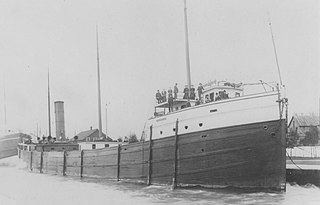
Iosco was a Great Lakes freighter that served on the Great Lakes from her construction in 1891 to her foundering on September 2, 1905, when she and her tow, the schooner barge Olive Jeanette sank on Lake Superior. While Olive Jeanette's wreck was located in over 300 feet (91 m) of water about eight miles (13 km) off the Huron Islands in the 1990s, Iosco's wreck has not yet been found.
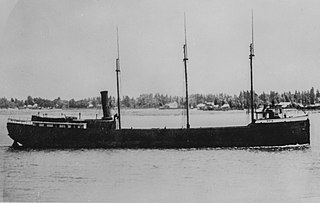
SS Ohio was a wooden hulled Great Lakes freighter that served on the Great Lakes of North America from her construction in 1875, to her sinking in September 1894 when she collided with the schooner barge Ironton which also sank in the collision. Ironton was being towed by the steamer Charles J. Kershaw, which was also towing the schooner Moonlight. Ohio was found upright in 2017, over 122 years after her sinking in over 200 feet of water off Presque Isle, Michigan. Ironton is still missing. The researchers who discovered Ohio plan to nominate her for a listing in the National Register of Historic Places.

SS Senator was a steel-hulled Great Lakes freighter that sank on Lake Michigan with the loss of nine lives and 268 Nash automobiles, on Halloween of 1929 after she was rammed in heavy fog by the bulk carrier Marquette. She lies in 450 feet (140 m) of water 16 miles northeast of Port Washington, Wisconsin. On April 12, 2016 her wreck was listed on the National Register of Historic Places.

The SS Atlanta was a wooden hulled Great Lakes steamer that sank in Lake Michigan off the coast of Cedar Grove, Wisconsin, United States, after a failed attempt of her being towed to shore ultimately killing 5 out of her 7 crew members on board. Her wreckage still remains at the bottom of the lake, and on November 6, 2017, the wreck of the Atlanta was listed on the National Register of Historic Places.
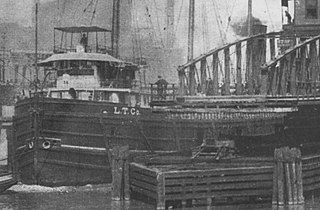
SS Florida was a wooden hulled Great Lakes freighter that served on the Great Lakes of North America from her construction in 1889, to her sinking in May 1897 when she collided with the larger wooden hulled freighter George W. Roby. Her wreck was located by Ed Ellison in July 1994, in 206 feet (63 m) of water almost completely intact, save for her stern.

SS Jarvis Lord was a wooden-hulled American Great Lakes freighter in service between 1872 and 1885. She sank without loss of life in the Manitou Passage on Lake Michigan on August 17 or 18, 1885, while loaded with iron ore.

SS Vernon was a wooden-hulled American passenger and package freighter that sank in a Lake Michigan storm on October 29, 1887, near Two Rivers, Wisconsin, with the loss of between 36 and 50 lives, making her one of the deadliest shipwrecks ever to have occurred in Wisconsin. Only one of the people on board survived.

SS John Mitchell was a steel-hulled, American lake freighter in service between 1907 and 1911. She was built in 1906 by the Great Lakes Engineering Works in St. Clair, Michigan, for the Cornell Steamship Company of Chicago, Illinois, which was managed by C.W. Elphicke. She entered service in 1907, and had a sister ship named William B. Davock. Throughout her career, John Mitchell carried iron ore and coal. On October 4, 1908, she ran aground at Indiana Harbor, Indiana, while loaded with iron ore.
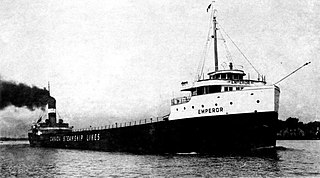
SS Emperor was a steel-hulled Canadian lake freighter in service between 1911 and 1947. She was built between 1910 and April 1911 by the Collingwood Shipbuilding Company in Collingwood, Ontario, for Inland Lines, Ltd. of Midland, Ontario. She entered service on May 3, 1911. Emperor was sold to Canada Steamship Lines of Montreal, Quebec. Under the ownership of Canada Steamship Lines, she carried a wide variety of cargoes, but most frequently iron ore to Point Edward, Ontario, where it would be transported to Hamilton, Ontario, by train. After the opening of the fourth Welland Canal, Emperor carried the ore straight to Hamilton. She was involved in several accidents throughout her career.

SS Chester A. Congdon was a steel-hulled American lake freighter in service between 1907 and 1918. She was built in 1907 by the Chicago Shipbuilding Company of South Chicago, Illinois, for the Holmes Steamship Company, and was intended to be used in the grain trade on the Great Lakes. She entered service on September 19, 1907, when she made her maiden voyage. In 1911, Salt Lake City was sold to the Acme Transit Company. A year later, she was transferred to the Continental Steamship Company, and was renamed Chester A. Congdon, after lawyer and entrepreneur Chester Adgate Congdon. She was involved in several accidents throughout her career.



















